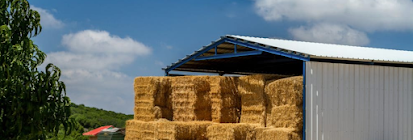Transforming Sheds Into Cozy Livable Shed Homes
The concept of transforming ordinary sheds into livable homes has gained significant traction in recent years. These unique dwellings, often referred to as "shed homes" or "shedomes," offer an innovative approach to housing that's not only cost-effective but also creatively fulfilling. This blog post explores the world of livable shed homes, examining their benefits, design considerations, costs, and sustainability aspects.
Why Choose a Shed Home?
Affordability: One of the most appealing factors of shed homes is their affordability. Compared to traditional housing, the cost of converting a shed into a livable space is considerably lower. This affordability makes it an attractive option for first-time homeowners, retirees, or those looking for a budget-friendly lifestyle.
Simplicity and Minimalism: Shed homes encourage a simpler, more minimalist way of living. Their compact nature demands efficient use of space, leading to a lifestyle that focuses on essentials, reducing clutter and unnecessary possessions.
Customization and Creativity: These homes offer a blank canvas for homeowners to express their creativity. From rustic to modern, the design possibilities are endless, allowing individuals to create a space that truly reflects their style and needs.
Designing Your Shed Home
Space Utilization: Effective space utilization is key. Innovative storage solutions, multipurpose furniture, and thoughtful layout planning are essential to make the most out of the limited space.
Comfort and Livability: Comfort shouldn't be compromised. Insulation, heating, and cooling systems are crucial for making the shed home comfortable year-round. Incorporating large windows can also bring in natural light, making the space feel larger and more inviting.
Outdoor Integration: Many shed homeowners choose to blend their living space with the outdoors. This can be achieved through decks, patios, or large doors that open up to the surrounding nature.
Cost Considerations
Transforming a shed into a home involves diverse costs. The budget should cover initial conversion expenses, determined by the shed's size, material quality, and customization level. Additionally, factor in ongoing costs for maintenance and utilities, essential for long-term sustainability and comfort of the living space.
Sustainability and Eco-Friendliness
Shed homes can be a beacon of sustainability. Their small footprint means less energy consumption for heating and cooling. Additionally, many homeowners opt for eco-friendly options like solar panels, rainwater harvesting, and composting toilets to further reduce their environmental impact.
Challenges and Considerations
While the idea of living in a shed home is appealing, there are challenges. Zoning laws and building codes can vary greatly and can be a significant hurdle. It's essential to research local regulations before embarking on a shed home project.
Conclusion
Livable shed homes represent a unique blend of affordability, simplicity, and creativity. They offer a sustainable housing alternative that challenges conventional norms. Whether it's a permanent residence, a vacation home, or a creative studio space, shed homes provide a versatile and cost-effective solution for a variety of living needs.
As we move towards a future where housing affordability and sustainability are paramount, the trend of converting sheds into cozy, livable homes is not just a fad but a viable solution to many of today's housing challenges.




Comments
Post a Comment